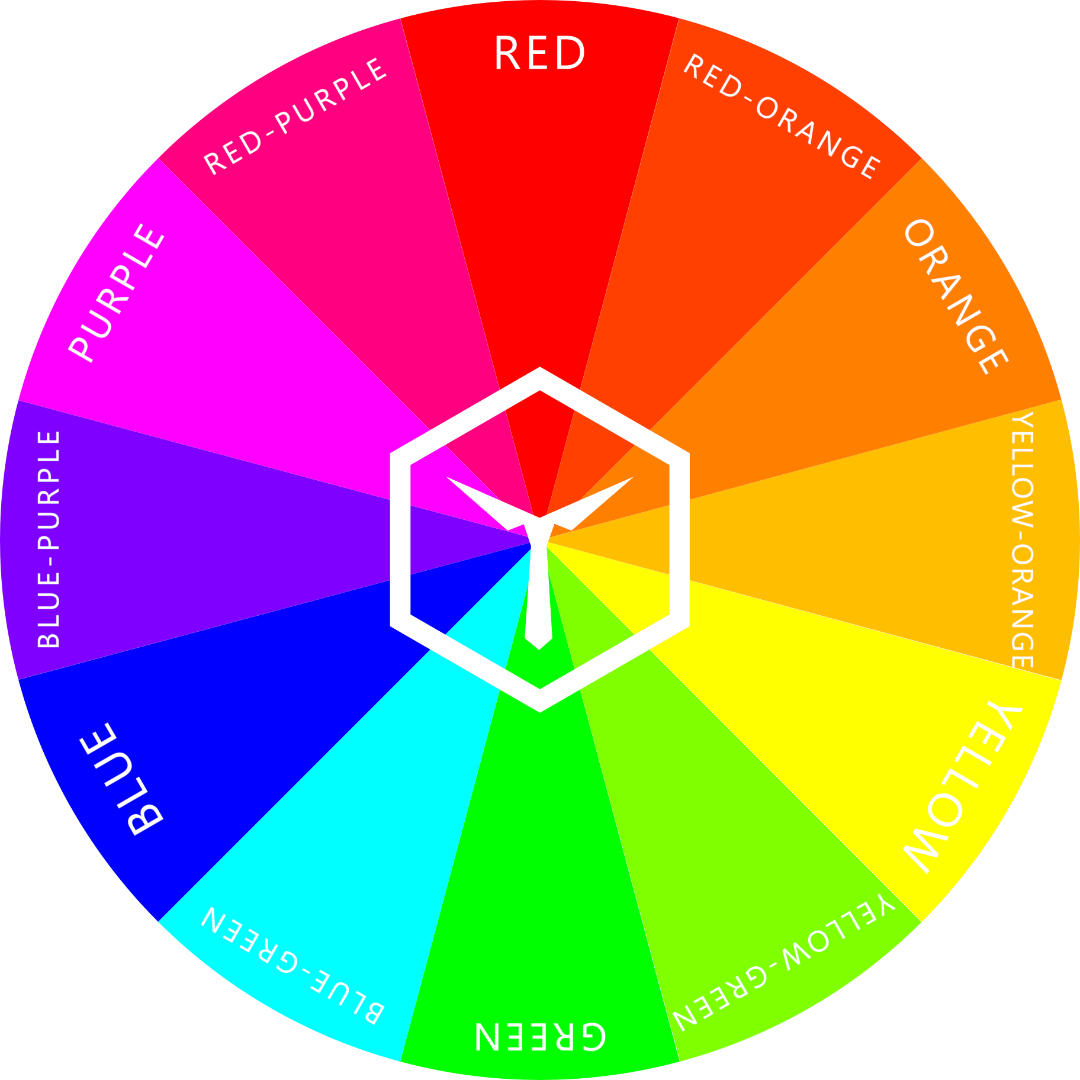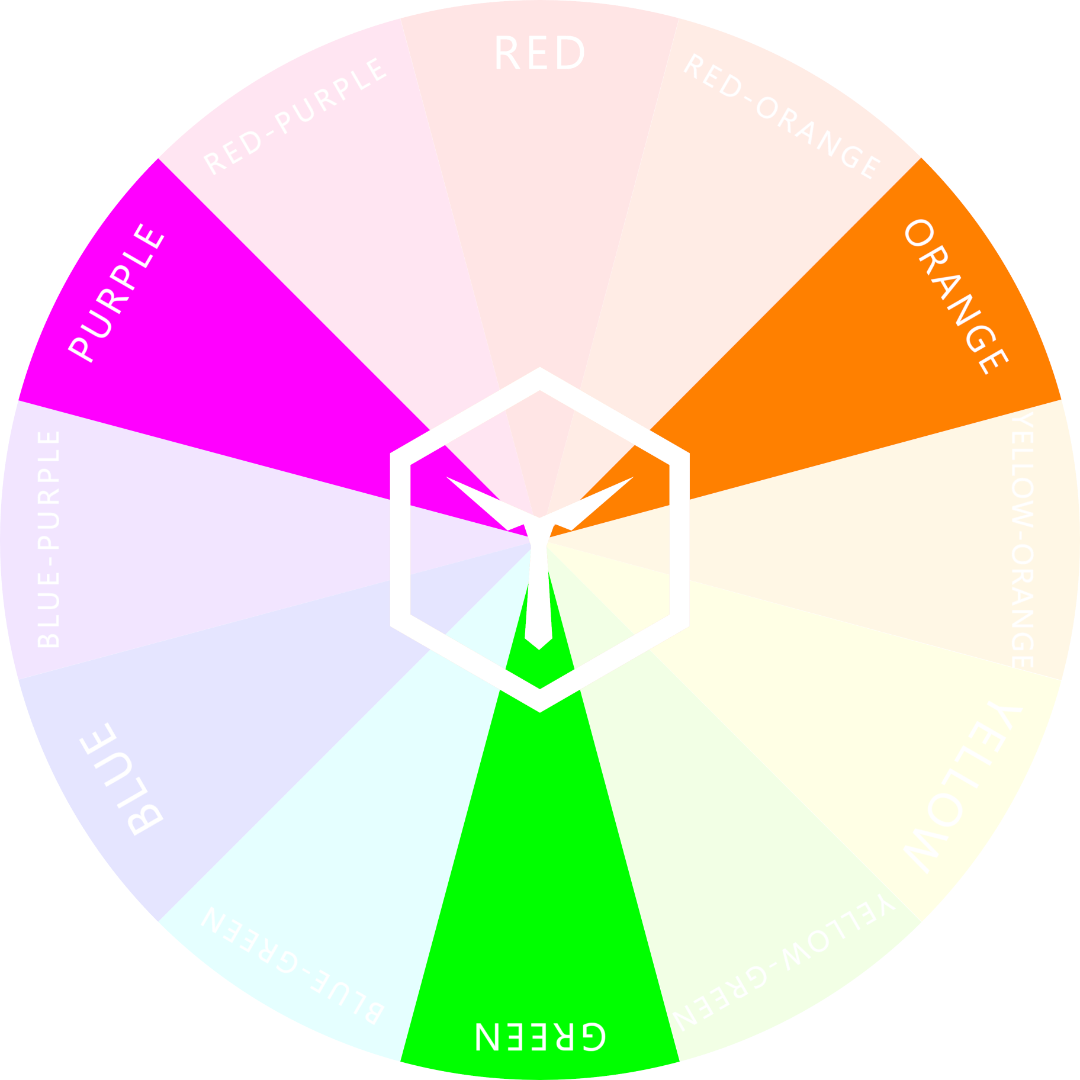The Color Wheel of Fashion
There are many different color wheels around and none of them are perfect. Why? Because perfection (especially for color wheels) isn’t even possible.
First, here’s what you have to understand concerning color wheels:
There are three types (subtractive “RYB”, and additive “RGB” and “CMYK”).
It doesn’t matter, in which “direction” the color wheel goes (clockwise or counter)
There is an infinite amount of color possibilities for any given color wheel
Huh? Ok, Let us show you what we mean.
This is our RYB Color Wheel. It’s best used for categorizing clothing.
In Fashion, we use a subtractive RYB color wheel. This means, that our primary colors are red, blue and either green or yellow. For fashion, we tend to use the RYB (not RGB) color wheel, which uses yellow as the third primary color.
The “RYB-Wheel” is the one you learn in arts and crafts when you’re young. The other two are used for other purposes:
RGB is used for lighting and digital formats (i.e. screens)
CMYK is used for printing
Since we’re writing about clothing here, we’ll refer to the fashion RYB color wheel and only go into detail on this one.
As with every color wheel, there are three “classes” that we categorize our colors into: primary, secondary and tertiary.
Primary Colors:
The 3 primary colors of the RYB color wheel: red, yellow, and blue.
There are three Primary colors (rather primary “hues”): red, yellow and blue. You can mix them to create any other hue possible.
Secondary Colors:
The 3 secondary colors in the RYB color wheel: orange, green, and purple.
If you mix two primary hues “50-50” you get a secondary color/hue. The three possible secondary colors are therefore: orange (red+yellow), green (yellow+blue) and purple (red+blue).
Tertiary Colors
The 6 tertiary colors of the RYB color wheel.
Tertiary colors/hues are the ones you receive when you mix a primary with a secondary hue. Or mathematically speaking: 75% of one primary color and 25% of another primary color.
Tertiary hues are named according to the primary and secondary color that were mixed. For example: “red-purple” or “yellow-orange” - whereas the primary color is always named first. There are a total of six pure tertiary hues.
How to use the RYB-Wheel for Fashion:
In fashion, we use the color wheel to classify clothing colors. Every piece of clothing has some sort of color and is therefore classifiable by hue.
Since there are a total of 12 pure hues in the fashion color wheel any piece of clothing will match (at least) one of those hues. Yes, the match might not be perfect, but you have to categorize it somehow.
It’s important to note, that tinting, shading or desaturating a hue does not change it’s position on the color wheel. Follow the links to learn more.
If you understand the principle of the color wheel, you’ll understand all the rules for color in fashion quickly. Read the article to learn all 10 Golden Rules to learn about how to use analogous, complementary, and seasonal colors (and much more).









![Top 8 Best-Matching Colors [Which Ones & Why]](https://images.squarespace-cdn.com/content/v1/5d91f9da52210569ede7ff3a/1651242239176-CXWJHIC3RXVB7QT9A8IS/COLORBUX+Best+Matching+Colors+Top+8+Pairs+BANNER+Thumbnail.jpg)
